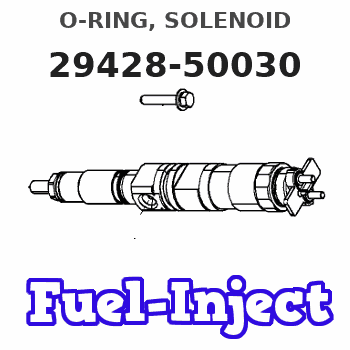Information o-ring, solenoid

Rating:
You can express buy:
Include in #3:
Cross reference number
| Part num | Firm num | Firm | Name |
| 29428-50030 | S-M | O-RING, SOLENOID | |
| S-M | ISUZU | O-RING, SOLENOID | |
| SM | MITSUBISHI | O-RING, SOLENOID | |
| SM | NISSAN MOTOR | O-RING, SOLENOID | |
| SM | TOYOTA | O-RING, SOLENOID |
Information:
The Energize-To-Run protection system and the Energize-To-Shutoff protection system are two electric protection systems that are used in order to protect engines that are unattended from serious damage. The electric protection system protects the engine from damage if an engine operating function is greater than a safe limit or less than a safe limit. When the customer purchases the engine, the customer chooses the ETR protection system or the ETS protection system to be installed on the engine.When the electric protection system detects an unsafe limit, the system energizes or the system de-energizes the fuel solenoid or the 2301A Electric Governor Control. An unsafe limit is called a fault.The basic difference between the ETR protection system and the ETS protection system is the operation of the fuel solenoid. The ETR system de-energizes the fuel solenoid in order to stop the fuel flow which causes engine shutdown. The ETS system energizes the fuel solenoid in order to stop fuel flow which causes engine shutdown.The ETR protection system requires the fuel solenoid to be energized in order for the engine to run. The fuel solenoid must be energized before the fuel is allowed to flow to the engine cylinders. After the engine starts and runs, a normal shutdown or a problem with any of the engine functions that are monitored will cause the fuel solenoid to be de-energized. When the fuel solenoid is de-energized, the fuel flow to the cylinders is stopped. This action causes engine shutdown.The ETS protection system requires the fuel solenoid to be de-energized in order for the engine to run. The fuel solenoid must be de-energized before the fuel is allowed to flow to the engine cylinders. After the engine starts and runs, a normal shutdown or a problem with any of the engine functions that are monitored will cause the fuel solenoid to be energized. When the fuel solenoid is energized, the fuel flow to the cylinders is stopped. This action causes engine shutdown.The 2301A Electric Governor Control operates in the same manner on the ETR protection system or on the ETS protection system. When the electric governor control system is installed, the fuel solenoid is not used. When a fault occurs, the electric governor control system is de-energized. This causes the fuel control linkage to stop the fuel flow to the engine.The ETR protection system and the ETS protection system use two or three engine components in order to monitor as many as six engine operating functions:
Engine overspeed (OS) which is monitored by the electronic speed switch
Crank termination which is monitored by the electronic speed switch
Oil step latch which is monitored by the electronic speed switch (3500 Series Engines)
Engine oil step pressure which is monitored by the electronic speed switch (3500 Series Engines)
Water temperature (WT) which is monitored by the water temperature contactor switch
Oil pressure (OP) which is monitored by one or two oil pressure switches.Overspeed protection monitors the engine from starting through 118% of rated speed. An engine that has all three of
Engine overspeed (OS) which is monitored by the electronic speed switch
Crank termination which is monitored by the electronic speed switch
Oil step latch which is monitored by the electronic speed switch (3500 Series Engines)
Engine oil step pressure which is monitored by the electronic speed switch (3500 Series Engines)
Water temperature (WT) which is monitored by the water temperature contactor switch
Oil pressure (OP) which is monitored by one or two oil pressure switches.Overspeed protection monitors the engine from starting through 118% of rated speed. An engine that has all three of
